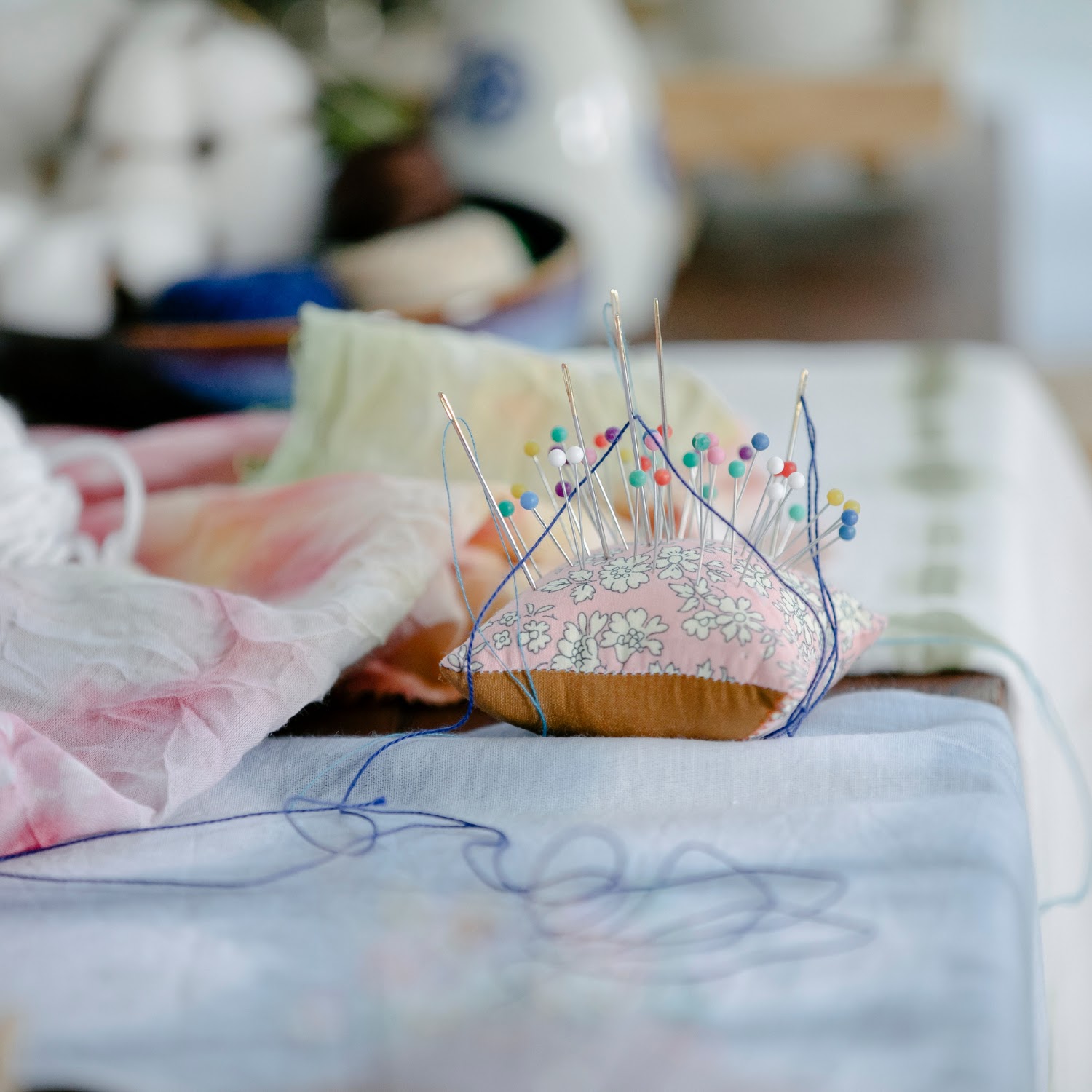Depending on the style of gown, certain types of bustles are installed. This particular gown did not have a break in the waistline, so the French bustle was best for this style gown. The bride will ultimately choose the bustle she prefers after proposing all suggestions.
This was actually my first bustle I've ever done. After, studying numerous videos and bridal sewing books, I still needed a second opinion and advice from Linda who manages the blog, The Sewing Garden. She was so sweet and helpful, I emailed her and sent pics and she gave me her knowledgeable advice. I felt like an eager apprentice! I want to express my gratitude to her, thank you Linda! I highly suggest checking out her blog for expert tips on alterations.
My client, as shown in this post, bought this beautiful Azazie gown online. We worked together to find the bustle style she liked the most. The French bustle was the proper choice as suggested by Linda (The Sewing Garden) and my client really loved the style of the bustle. This was created by sets of ties sewn underneath the fabric and the lining. Each set of ribbons is tied underneath to form the structure of the bustle. This gown has 5 sets of ties made with felt squares and grosgrain ribbon. Before the bride attends the reception, someone must hand her the train so she can pull it up over her head. One of her bridesmaids or Mother of the bride can help tie all the ribbons together. The train is let down, fluffed a bit and she's ready for the reception!
You can view my here video on Facebook below. Don't let the message unavailable chase you away. You can click "watch on Facebook" and it will take you there. This was previously on my old channel on YouTube, but I transferred all my videos to Facebook:
Here is how I put it together:
1. Gown is shown here with a full train.
1. This is where I did my intense studying before fitting my client. I started by taking up the gown in the middle where the white buttons are. I took it up enough for the train to be off the floor. then pinned 2 more points on each side of the middle. Somehow while you're pinning, it forms an upside down U shape - this is good. So I just went with the shape I saw because most French bustles I've seen in pictures looked similar to this.
 |
2. Here's a close up of where I placed my marker safety pin - this is the anchor point in the middle
3. Before releasing the safety pins that are actually holding the bustle together, I attached 2 more pins lightly at each point. This would be underneath the folds of fabric. When I release the pins holding the gown together, I end up with one pin at the top and one at the bottom as shown in the diagram above. This is where I had to make some adjustments.
The left diagram shows my actual point positions and the measurements between the points. My points on each side of the anchor were a bit wonky. In the right diagram, I decided to even out my points slightly and I wanted to form a more even U shape. The anchor measurement between the points does not change. That acts as your base measurement.
In the end, I took the rest of the vertical points and made them match the anchor measurements. The results worked very well and my client was so happy with her gown.
4. My next step was to create the set of ribbons for the bustle. Since there's 5 points on this gown, I had to make 5 sets - 2 ribbons per set=10 ribbons total. Each ribbon was approximately 10" long. I cut 10 small squares of white felt and machine stitched numbers on them. This number system helps when you have to tie the sets together. 2 squares is number 1, 2 squares is number 2, etc.
5. Each ribbon and square is sewn on each point. This is the underside of the gown flipped upwards. The ribbons that are on the top points - direction of the ribbon goes down. The ribbons that are on the bottom points - direction of the ribbon goes up. When the ribbons and felt squares are ready to tie together, they just tie neatly this way.
That's all there is to it! I'm not saying this was a breeze to do, but quite the learning experience. I hope you enjoyed reading this tutorial, happy sewing! 💓😀




















Post a Comment